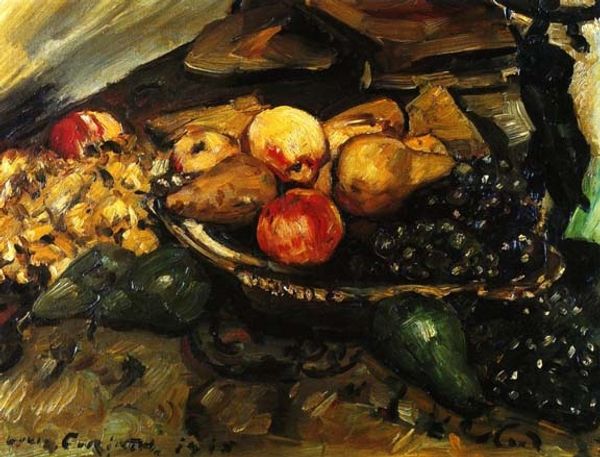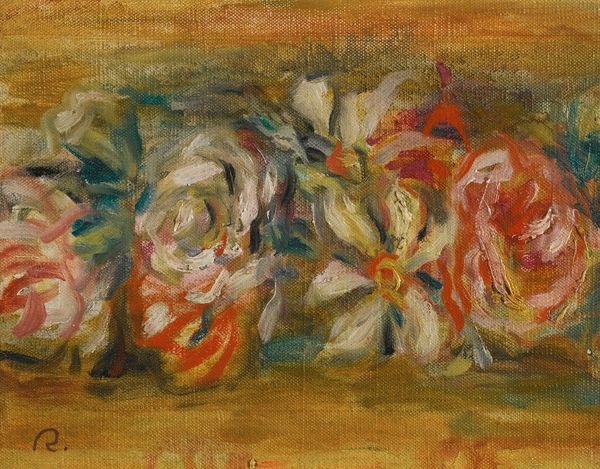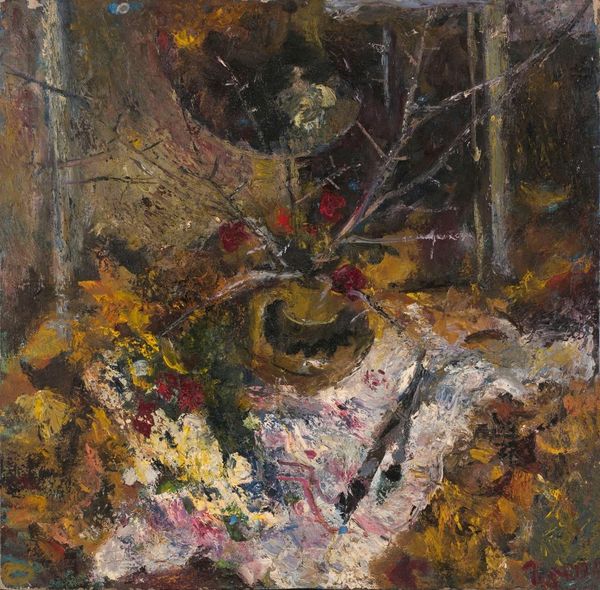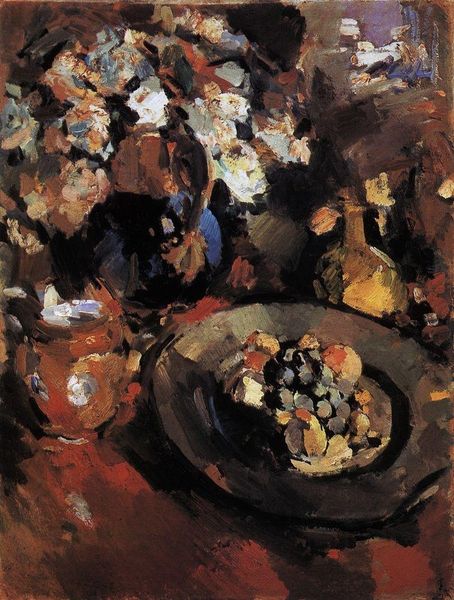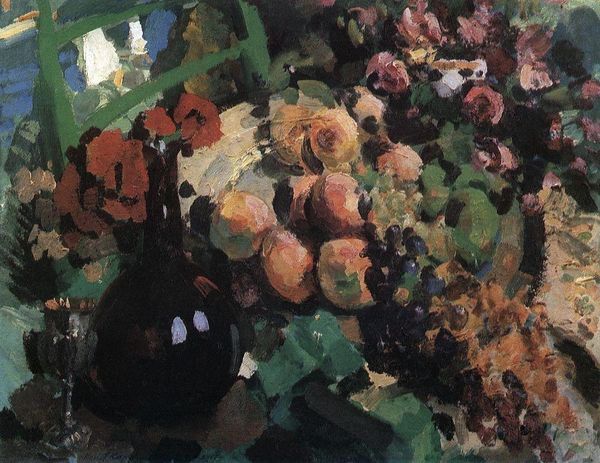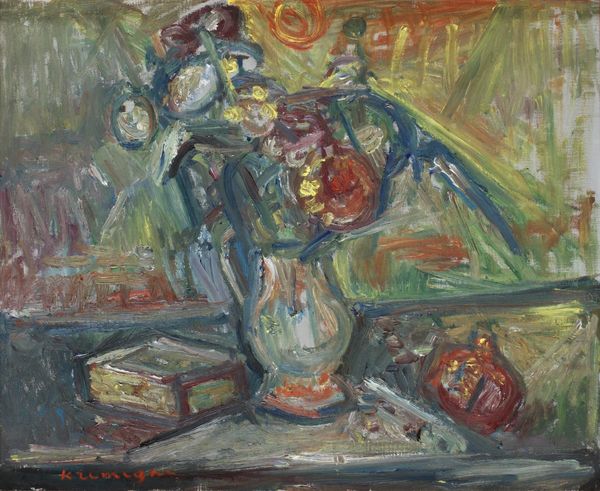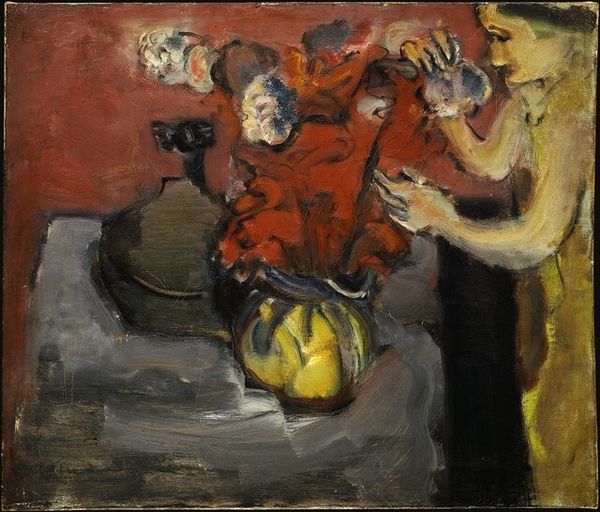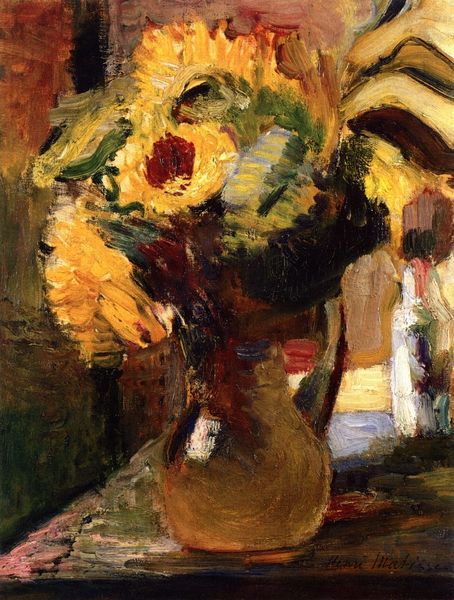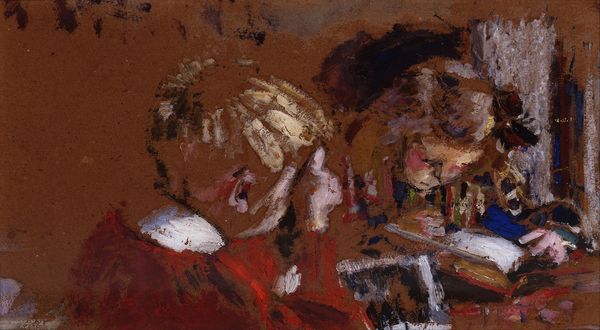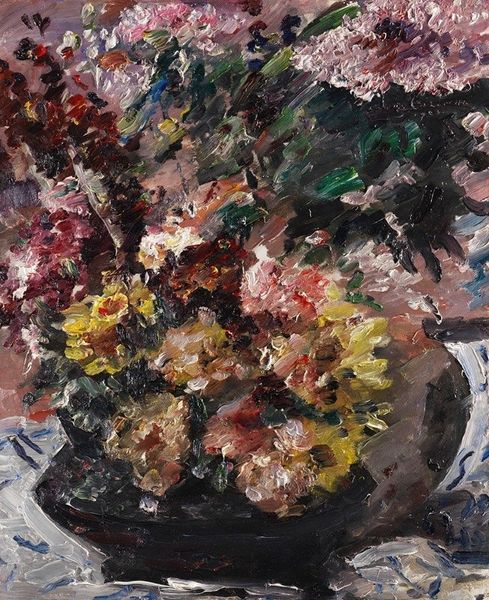
painting, oil-paint, impasto
#
painting
#
oil-paint
#
oil painting
#
impasto
#
fruit
#
expressionism
#
russian-avant-garde
#
expressionist
Copyright: Public domain
Curator: Let's discuss Konstantin Korovin’s "Fish, Wine and Fruit," painted in 1916. The Tretyakov Gallery in Moscow currently houses this striking oil painting. Editor: The immediate impression is rather dark and sensuous; the impasto technique creates a palpable texture that hints at decay even among the abundance. What's the symbolism? Curator: Traditionally, still lifes function as *memento mori*. In this Russian-Avant-Garde painting, the imagery isn’t necessarily religious in a strict sense, but it carries weight about transient life through representations of abundance – wine evoking festivity or sacrament, and the fish a symbol with layered cultural history, often signaling both sustenance and sacrifice. Editor: The layering of meaning in the fish specifically feels resonant, especially within the context of impending societal upheaval during that time period. The painting isn’t *just* a display; it reads as a commentary. A feast that will end soon? Curator: That's insightful. I agree – it speaks of both luxury and foreboding. Look at how the colours clash, yet complement – there's harmony in discord. It pulls on Russian iconography too, like in some orthodox frescoes or the opulence found within tsarist art – and that juxtaposition provides insight into the cultural tensions that would spark during the Revolution a year later. Editor: The arrangement of these disparate elements creates visual friction that destabilizes traditional opulence and luxury; it's an interrogation of those social categories using accessible symbolism. Curator: The brushstrokes – quick, deliberate – mirror this period. It’s the same visual shorthand one sees developing among many artists then expressing discontent or a cry for change that carries collective memory. The fruits, in particular, seem caught between ripening and withering, expressing mortality in human experiences. Editor: A vibrant yet uneasy image, encapsulating anxieties surrounding social change by playing with recognisable archetypes. Ultimately, its power is about reflecting humanity during that pivotal, vulnerable era. Curator: An evocative reflection—an articulation through imagery that moves beyond simple symbolism to a potent emotional resonance within a society ready to transform. Editor: Absolutely. Korovin used symbolism effectively to engage with both societal and human introspection in a manner that history books alone cannot replicate.
Comments
No comments
Be the first to comment and join the conversation on the ultimate creative platform.

